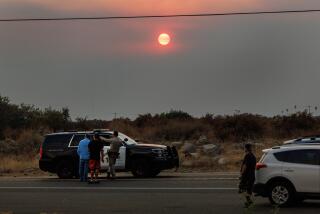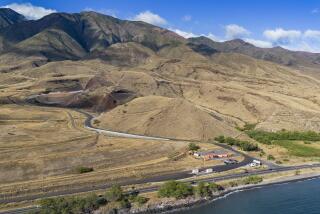On the Big Island, volcanic activity could worsen respiratory problems
Visitors to the Big Island who suffer chronic respiratory problems are being urged to take common-sense precautions because of air pollution caused by volcanic activity.
Conditions are right for increasing particulate levels over southern and eastern parts of the Big Island, said Darryl Oliveira, chief of Hawaii County Civil Defense.
The lava eruption that began in June has not moved farther downslope toward the village of Pahoa, but its flow has widened. The molten rock burns dry vegetation in its path. That smoke, combined with ash from the Kilauea volcano, creates a haze that the locals call “vog.”
Air quality levels remained good over much of the island as of Friday afternoon, according to the Hawaii Department of Health website, but particle pollution climbed into the “moderate” zone in Hilo. That could pose problems for “unusually sensitive” people, the website said.
“We haven’t seen any spike in respiratory cases due to the vog,” Oliveira said. But visitors with serious respiratory problems might want to consult with their doctors, he said.
Exposure to vog can be reduced through simple steps in a car such as closing the windows, turning on the air conditioning and activating the “recirculate” setting.
It’s generally the Kona coast that experiences poorer air quality because of vog, he said. During the next week or so, a southerly wind will carry the pollution over the region stretching about from Hawaii Volcanoes National Park to Hilo.
The flow of lava toward Pahoa remained stalled on Friday. Oliveira said the red-hot lava is about one-third of a mile uphill from Highway 130 and the village police and fire stations. But, at present, he said it poses no threat to the community.
Follow us on Twitter at @latimestravel
More to Read
Sign up for The Wild
We’ll help you find the best places to hike, bike and run, as well as the perfect silent spots for meditation and yoga.
You may occasionally receive promotional content from the Los Angeles Times.






